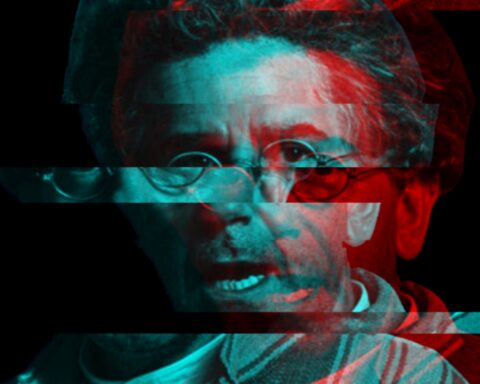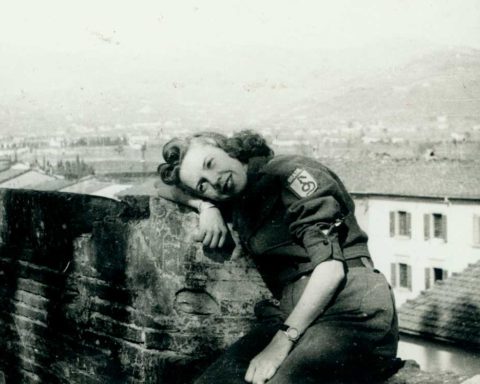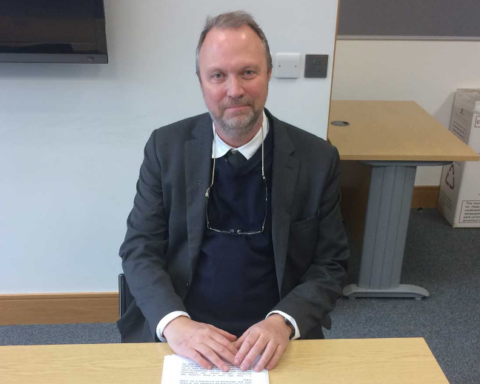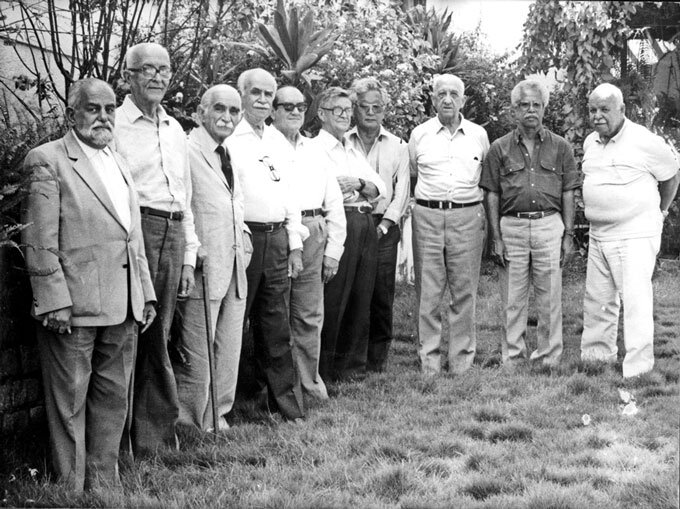The hopes and dismay of a modernist dream, seen through the work of a Belgian-born journalist who embraced Brazil.
According to Angela de Castro Gomes, the period from 1930 to 1964 in Brazil was a time, “of a nationalism expressed through plans for a new political architecture of state institutions, visible, even, in the buildings that were supposed to house them, mirroring the power and boldness that would transform the country”. [1] And few landmarks represent this climate as much as the construction of Brasília.
The new capital, planned and contemporary, a model city built at the heart of the country, was the reflection of a developing Brazil, urbanizing creatively, determined not to repeat the glaring mistakes of post-World War Two Europe. Thus, modernism promised much. This globally resonant artistic movement, with its political sensibility and new world-view, had been evident in the country’s arts and architecture for decades. But it would reach its pinnacle with the construction of Brasilia; a city that was born under the aegis of the future, of planning and forethought, a city that was to be a consummate work of art, open to the skies, in the centre of Brazil.
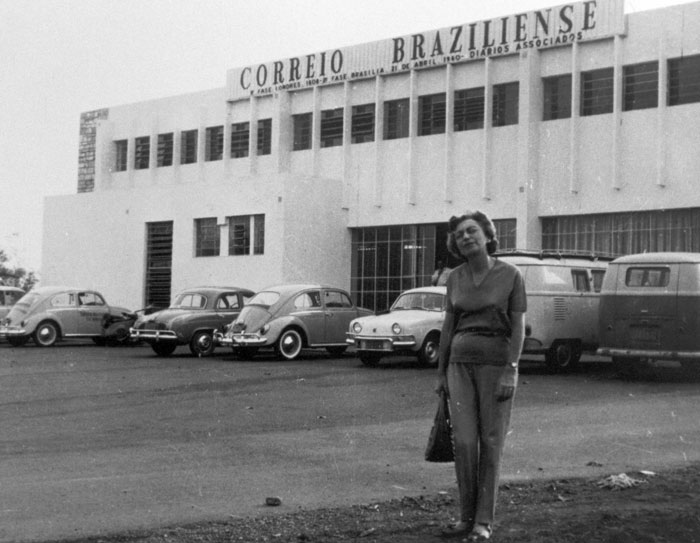
The idea of Brasilia was striking and irresistible, especially to a journalist of Belgian origin, passionate about Brazil. Yvonne Jean, of Jewish heritage, came to Rio de Janeiro at the age of twenty-nine fleeing the Nazi invasion of her country. [2] Here she married and became a naturalised Brazilian. Drawing on contacts in intellectual and artistic milieux, she could produce for her naturalization process, a letter from the poet Carlos Drummond de Andrade, praising her “Brazilianness” [3]
Jean arrived at the port of Rio for the first time in 1940 and, though a histologist by profession, started writing for the city press the following year, debuting with a piece about coming to Brazil. In it, Jean revealed scant knowledge of the country and her expectations. “As you can imagine neither theatres, nor cinemas (…) one is alarmed by the lack of city life. (…) Imagine what I experienced when I came face to face with the building of A Noite ”. [4] The strangeness, however, gave way to familiarity. Jean quickly adopted the collective “we”, placing herself alongside Brazilians, for example, when referring to Europe. In one of her columns, she spoke of France as “a country that has in the past always served us as a spiritual guide ” [5] [emphasis added]. Between 1941 and 1971, the ex-histologist now journalist wrote chronicles and reports on various topics, stressing the arts, daily life, culture and education for titles such as Diário de Notícias, Correio da Manhã, Última Hora and Correio Braziliense.
Moving to Brasilia: life in the new capital
In 1962, with an invitation from anthropologist Darcy Ribeiro to join the new University of Brasilia, Jean migrated with her family to the ultra-modern capital. [6] At UnB she would work for the Cultural Extension Centre. At this time, as buoyant as ever since her arrival in Brazil, her press contributions are marked by daily reflection, and hopes for the development of the city.
In Brasilia, the new journalist, now a local like us, employed the first person plural in her contributions. “We who insist on the title of ‘brasilienses’, we who came here eight, nine or ten years ago, not just for fleeting visits but to live … ”[7]. More than a writing style, or a device to win over readers, as one might suspect, since Yvonne had been deeply involved in the development of the new capital, she believed that it was necessary to transform Brasília into a place of culture and art. Brazil, as she once explained, had created, “a modern city without bars”, which would only be complete with, “a new enlightenment available to everyone”, and when an “autonomous and dynamic culture permeates the concrete and glass, giving buildings effectual life ”. [8] So how did she contribute to this project?
Apart from championing art throughout the capital and in the press, such as the plea for a speedy completion of the National Theatre – “Which country’s capital would be seen without a theatre?” [9] – she organized lectures and courses such as “Handicraft in Brazil” (1963) at UnB, with artists from the region and beyond. [10] In December 1968, she founded Galeria Paiol, although it would only last a year. As a polyglot – she spoke nine languages - Yvonne also acted as an interpreter at international conferences and in the translation of works, such as the play Christ versus the Bomb, which earned her a partnership with director Silvia Orthof.
In Correio Braziliense, Yvonne Jean’s texts are woven though with dreams for the model city. Her column Esquina de Brasília, was published between January 1962 and March 1971, except for the period May 1962 to February 1965, when she changed its title. “I explained that I would foreground education for the number one issue in Brazil, in general, and Brasília in particular. I did this so much that Esquina de Brasília ended up being O Ensino Dia a Dia! [11] This was precisely the moment when Jean was most involved and excited about UnB. “Schools of modern design are being born, a renovated and renovating university is preparing to radiate culture into the new city.” [12]
But she wasn’t alone in her exhilaration. Upon registration for the first entrance exam, “No less than 120 candidates appeared on the first day”. [13] There was enormous enthusiasm for the construction of the university, present in almost all of Jean’s columns. There was talk of an innovative curriculum, of highly trained teachers, in short, of an institution that could be compared with the best in the world.
UnB embodied the whole Brasilia dream of culture and ambition; an integrated university for students and non-students alike, as well as for other national or international learners, exchanges between departments with, for that time, pedagogical innovations, such as the division by semesters and credits of disciplines, core programmes integrating students from similar areas, the centre for the promotion of culture and postgraduate courses. In addition to the architecture itself were items which made Oscar Niemeyer and Alcides Rocha Miranda, “spend a few days and nights drawing plants” [14].
Military intervention at UnB
Although now a national reference for higher education, UnB suffered severe setbacks after its 1962 inauguration, following the 1964 Civil-Military coup. Within eighteen months of the overthrow, two military incursions were carried out with the justification of purging the campus of communists. [15] In April 1964, troops seized books and materials considered “subversive”. [16] In October 1965, they demanded the dismissal or house arrest of fifteen teachers. The reaction was a mass resignation of about two-thirds of teaching staff. [17] This purge of intelligentsia dealt a crippling blow to the UnB enterprise. Personalities like the architect Oscar Niemeyer, the physicist Roberto A. Salmeron, who had just returned from the European Organization for Nuclear Research (CERN) in Geneva, the jurist José Sepulveda Pertence, who would become Minister for the The Brazilian Federal Supreme Court (STF) between 1989 and 2007, the artist Athos Bulcão, among others, left .
In the days following the first invasion, Jean did not comment on the episode directly, but she did mention some more general discomforts. “In times of crisis, difficulties or transformation, cinema is, without a doubt, a relief. Unfortunately, we couldn’t find that in Brasilia. (…) As in any other city in the country, even a small one, we have at hand only two cinemas to distract us ”. [18] Yvonne Jean provides more detailed coverage of the second invasion, publishing the letter from the teachers and the positioning of the students, and then in the following weeks, warns of the emerging clampdowns at UnB, such as the statements by the then president Laerte Ramos de Carvalho that, “Cultural Extension was not essential to UnB”. It was to close. What had been for the journalist, “an innovation that arose naturally within the new concept of the university ”, was, after the Central Institute of Arts, “the Dean’s second cost-cutting suggestion”. [19] About a month later, clearly disheartened, Jean reshaped her column, suggesting that primary education was already consolidated, secondary education “was on track” but higher education had “lost the specific characteristics of the UnB experience.” [20]
Dictatorship and memory in Brasília
Yvonne Jean continued to work for UnB, mainly on translations and as an interpreter at conferences, but her relationship with the University had changed. She resumed the column Esquina de Brasília, but fixed on the daily life of the city. Her columns expressed hope – “Here in Brasília, where all creativity is possible” [21], but, at the same time, almost inevitably, they showed how much of the Brasília project was still on paper. Yet to assert itself as a socio-cultural reference, the new capital took time to position at the centre of political power. General Médici was the first to rule exclusively from Brasília (1970-1974). [22]. In 1970, she expressed her dissatisfaction at the lack of theatre companies in Brasília and the scarcity of visits from outside groups, the closure of art galleries and she complains that no artist from Brasilia was selected for the São Paulo Art Biennial that year. She described a meeting at the home of Dinah Silveira de Queiroz and Dário Castro Alves, which allowed the São Paulo artist Alice Maria to display her ceramic objects to guests. She suggests such small individual initiatives could provide model contacts that the city would need. [23]
It is interesting to note that, despite the exile of Darcy Ribeiro and many other colleagues, Jean remained in Brasília for the rest of her life, not that this stay was easy. Although she was not targeted in the investigations at UnB, in 1969 she was accused of attending a meeting of the Brazilian Communist Party (PCB). In 1971 Jean was found guilty. A week after sentencing, on April 6, 1971, she left the Correio Braziliense and ceased her activity in the press. [24] In spite of appeal, her conviction was confirmed in 1972; 12 months of prison, commuted to house arrest for reasons of health. [25]
During this period, she detailed her experience of imprisonment and trial and re-visited her most important press interviews. Neither book, however, has been published, although her children’s books from previous decades have been reissued. She died a widow, in 1982, still residing in Brasilia, where her only son, João Luís, lives. Her heir donated all the materials from his mother’s office to the Public Archives of the Federal District, which makes the Private Fund Yvonne Jean available for consultation and almost all material, except the photo collection, is digitized. The historians of journalism, UnB, Brasília and of Yvonne Jean’s journey are grateful.
References
[1] GOMES, Angela de Castro. As Marcas do Período. In: GOMES, Angela de Castro (coord.) Olhando para dentro 1930-1964. Coleção Histórias do Brasil Nação 1808-2010. Vol. 4. Madrid & Rio de Janeiro Fundação Mapfre & Editora Objetiva, 2013. P.
[2] Her name upon arrival in Brazil was Yvonne Silberfeld. In the press, she wrote under the pseudonym Yvonne Jean and her married name was Yvonne da Fonseca. However, during her naturalization process, an error made her official name Yvonne Jean da Fonseca. Source: ARQUIVO NACIONAL. Processo de naturalização de Yvonne Jean da Fonseca. Naturalização Proc.: 35190 Cód. Ref. 78.787/1949.
[3] Ibid.
[4] JEAN, Yvonne. Viagem absurda. Diário de Notícias. Rio de Janeiro, 12th Oct. 1941.
[5] JEAN, Yvonne. Leon Moussinac, o Instituto dos Altos Estudos Cinematográficos e a Escola de Arte decorativa de Paris. Correio da Manhã, 14th Nov. 1948.
[6] Site da Associação Nacional de Escritores: http://www.anenet.com.br/
[7] JEAN, Yvonne. Esquina de Brasília. Correio Braziliense. Brasília, p. 17, 12th Oct. 1941.
(8] JEAN, Yvonne. Esquina de Brasília – Começando o dia. Correio Braziliense. Brasília, 19th Jan. 1962.
[9] JEAN, Yvonne. Esquina de Brasília – E o Teatro Nacional. Correio Braziliense. Brasília, 11th April 1962.
[10] PUBLIC ARCHIVE OF THE FEDERAL DISTRICT, BR DFARPDF YJ.PI-6-0016 (1) d.
[11] JEAN, Yvonne. Esquina de Brasília. Correio Braziliense. Brasília, 19th Jan. 1962.
[12] Ibid.
[13] JEAN, Yvonne. Esquina de Brasília – Universidade “Bossa Nova”. Correio Braziliense. Brasília, 21st Jan. 1962.
[14] Ibid.
[15] In 1968, there was a third, more serious military invasion, which culminated in the arrest of 60 people and a student shot in the head, although he later survived. In this episode, Honestino Guimarães, a student leader who later became one of the “disappeared”, was arrested.
[16] On this occasion, troops removed books from the library as propaganda and a flag that they claimed to be that of communist China. The episode was reported the following day by the Correio Braziliense with the following headline: “Communist Propaganda Material Seized by the Army at UNB.” A day later, the same newspaper published, although not in the form of an erratum, a clarification by the vice-rector that the seized flag appearing in the photo was in fact from Japan and not from China. See: CORREIO BRAZILIENSE. Material de Propaganda Comunista Apreendido Pelo Exército na UNB. 10th April 1964; CORREIO BRAZILIENSE. Material de Propaganda Comunista Apreendido Pelo Exército na UNB. 10th April 1964; CORREIO BRAZILIENSE. Bandeiras na Universidade. 11th April 1964; SALMERON, Roberto A. A universidade interrompida: Brasília 1964-1965. Brasília
[17] CORREIO BRAZILIENSE. 180 professores deixam UnB. 19th Oct. 1965.
[18] JEAN, Yvonne. Esquina de Brasília. Correio Braziliense. Brasília, 11th April 1962.
[19] JEAN, Yvonne. Esquina de Brasília. Correio Braziliense. Brasília, 24th Oct. 1965.
[20] JEAN, Yvonne. Esquina de Brasília. Correio Braziliense. Brasília, 3rd Nov. 1965.
[21] JEAN, Yvonne. SESI faz espetáculo com atores amadores que fica de qualidade. Correio Braziliense, 14th April 1970.
[22] CHAIA, Migue; CHAIA, Vera. A Dimensão Política de Brasília. In: Cadernos da Metrópol, n. 20, 2º. Sem. 2008, pp. 165-17[23] JEAN, Yvonne. Esquina de Brasília. Correio Braziliense. 26th Sep. 1970.
[23] JEAN, Yvonne. Esquina de Brasília. Correio Braziliense. 26th Sept. 1970.
[24] According to the Association’s Record Documentation Centre, (CEDOC), Yvonne Jean asked for immediate dismissal. However, we have no way of knowing for sure whether there was an agreement to leave due to her being condemned for subversion by the military regime.
[25] JORNAL DO BRASIL. STM reduces the sentence of one defendant and maintains the conviction of nineteen others from Brasília. 10th Jun. 1972.
Ana Paula Tavares Teixeira is sub-editor of Café História. She is a Master’s student on the Postgraduate Program in History, Politics and Cultural Property of the Getúlio Vargas Foundation (PPHPBC / FGV), and a CNPq scholarship holder. A graduate in Social Communication – journalism from UERJ (2006). She graduated in Theatre from Casa de Artes de Laranjeiras – CAL (2010). She specialises in Intellectual History, Press, Cultural Mediation in the trajectory of journalist Yvonne Jean.
How to cite this article
TEIXEIRA, Ana Paula Tavares. Yvonne Jean, Brasília and UnB (1962- 1965). In: Café História – History made with clicks. Translation by TiraTEXT. Available at: https://www.cafehistoria.com.br/yvonne-jean-brasilia-and-unb/. Published: Jul 13 2020. Access: [inform date].

